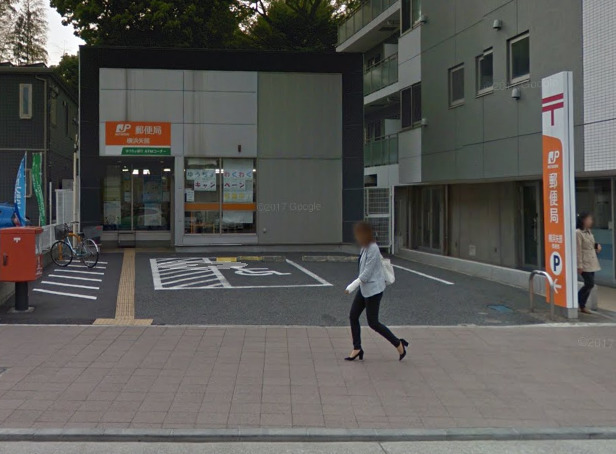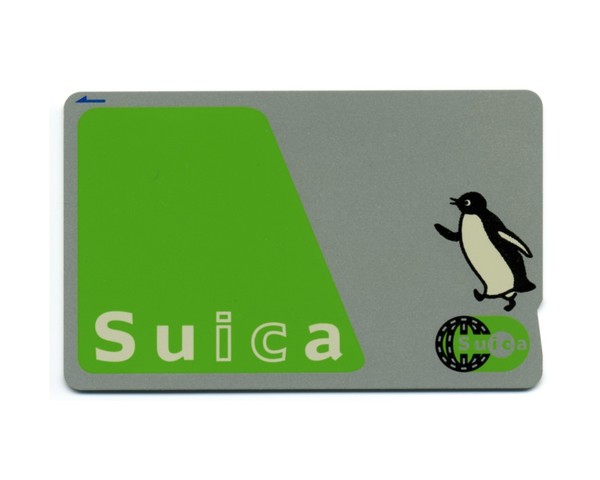Getting Around¶
Money¶
Surprisingly the best way to exchange money is using an ATM and a debit card. Check with your bank for the additional charge and the rate before you leave.
For me, it was $2 per withdrawal, and the international visa rate, which is pretty good. The current international visa rate can be found in https://usa.visa.com/support/consumer/travel-support/exchange-rate-calculator.html.
Expect to pay 10% more if you exchange money in a bank (there is a bank that does it in Kamakura).
Try to avoid using your credit card while in Japan, in ATM machines and in purchases. They charge 2.5%, and also start accumulating interest from the same day (no grace period like regular purchases).
You’ll need some money to take the train, so I recommend exchanging your local currency to 10,000 Yen before you leave home, and the rest to use a debit card and an ATM.
The ATMs that worked best for me are in the branches of the JP – Japan Post. This is how the ATM in Totsuka looks like:

There is no route for it, but it is marked on the map (5 minutes from the station, 10 minutes from Totsuka house). The withdrawal limit at that ATM is 50,000 Yen per transaction, but there might be a limit on your bank’s side as well.
Make sure to check your bank daily withdrawal limit before you leave, and maybe ask to increase it for the period. Be aware that the daily limit is reset when the date at your bank’s changes, not in Japan. The ATM has instructions in English.
It’s also a good idea that while you’re on the phone with them, let them know you are traveling to Japan and expect to make withdrawals from there, so your card will not be blocked.
Train¶
All the train signs are displayed in English as well as Japanese. If it’s an electronic sign it will alternate, if it’s printed, there will always be an English name for the station.
Inside the train the electronic signs always rotate to English as well, and many have English announcements.
When the train arrives at the station and the doors open, usually the name of the station will be announced in the speakers, with some music unique to that station. After a while it becomes very easy to navigate.
There is a constant chatter at the train station. Hearing 3 different announcements at the same time is not uncommon. Get used to it.
The trains are always on time. You can rely on it. There are also marks on the platforms that will show you where the doors will be. On the platform going to the front of the train will give you better chances of getting a seat on busy times.
Suica Card¶
While you can buy a ticket before every train ride, it’s tedious and slow. Do yourself a favour and purchase a Suica card in the first chance you have.

Go to any machine that sells tickets, and press ‘English’, then choose the option to get a new Suica card. You’ll be asked for a deposit of 500 Yen. You can get the deposit back in Narita when you leave at the ticket office, or you can take the card with you, for use on your next visit.
The card then acts as a charge card. You load money into it, then just wave it at the gates (you don’t even have to take it out of your wallet) every time you enter and exit the station, and the required amount will be taken off your card. Charge it on every machine that sells tickets. Prices of rides are about 140-160 yen for a short ride, and increases with the distance.
You can also use the card in the bus, the train stations lockers (very useful to leave the dogi if you want to walk about before class), and some vending machines. Overall, it’s very convenient and highly recommended for a good experience.
There is some more info in English in the video below:
For more information see the Suica web site
Totsuka Train Stations¶
Totsuka has two stations actually - above ground is the regular JR line, under ground is the Yokohama city subway.
The JR line runs north-south. Use platform 1 to go to Higashi-totsuka, platform 2 to go to Yokohama, platform 3 or 4 to go to Ofuna, and platform 4 to go to Kamakura. For the last case, make sure the train is bound for Zushi or Kurihama.
The subway runs east-west. You’ll use the subway to get to Keikyu-Taura or to Kanazawa-Hakkei (Subway to Kamiooka, then Keikyu line to the destination).
Bus¶
We only used the bus from Higashi totsuka back home. We could not figure out the time table posted, or the bus numbers.
Your best bet is to study the Kanji for “Totsuka Eki”, and then watch the front of the bus as it approaches the bus stop. Also ask the driver. “Totsuka-eki e ikimasuka?”. Get off at the stop named “Bridgestone-mae” (in front of Bridgestone factory) and walk up the hill home.
You can pay with the Suica card. Unlike the trains, the cost does not depend on the distance and is a 220 Yen flat fee per ride.
Personal Safety¶
In any of the routes, at no point in time, I felt even a little bit threatened. Even the small alleyways, and late at night, it always felt safe an calm. As Japan is one of the safest countries on earth, if not the safest, I hope your experience would be similar.
Having said that, if you prefer, you can always take the busier routes. The routes in this guide were chosen to take the quieter streets most of the time – especially from Totsuka train station to the house. If you prefer main roads, you can walk from Totsuka train station to the Aeon mall, and from there follow the route back to the house.